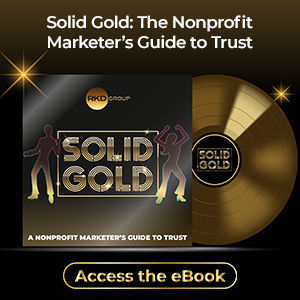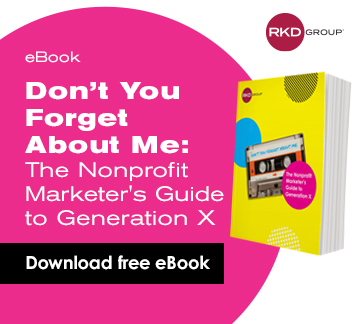Modern fundraising requires the right collection of modern technology applications to run effectively. We commonly call this collection your nonprofit’s “tech stack.”
Technology can be your organization’s greatest ally—or your biggest source of frustration. Ensuring that it’s the former depends largely on both identifying the right tools and learning how to use them properly.
But with new tools popping up faster than you can say “donor journey,” how do you build a tech stack that works together, works for your mission and works for the long haul?
Unfortunately, we see a lot of nonprofits buy based on features in sales presentations without getting hands-on experience or considering what really matters:
- Does it solve your problem—or just look flashy?
- Is it easy for your team to use?
- Will it grow with you?
- Is the company responsive and values-aligned?
So let’s break down everything you need to know about building a modern, adaptable fundraising tech stack.
Why ‘composable’ is more than a buzzword
All-in-one solutions offer the promise of making everything easier because it’s all in one place. But in reality, they typically do one thing well and are mediocre at everything else.
Today’s fundraising success depends upon a composable tech stack—a flexible, modular system that’s designed to adapt and scale.
Think of it like LEGO blocks for your fundraising. You pick the best pieces for each job and connect them together for a more customized and effective system. A composable approach means:
- Swapping out tools without breaking the whole system
- Scaling quickly when new needs arise
- Reducing vendor lock-in
- Keeping donor experiences smooth and consistent
The key? Integrations that talk to each other and a strategy that aligns with your team’s capabilities.
3 pillars of a smart fundraising tech stack
Building a modern fundraising stack means thinking about three critical areas:
1. Infrastructure
Think of this as your foundation—fast, secure and scalable. For example:
- Cloudflare can supercharge your site speed and keep donor data safe.
- A reliable CMS (like WordPress or Webflow) keeps content nimble.
- Smart hosting decisions improve load times, SEO and accessibility.
2. Data + Automation
Your data should work for you, not against you. For example:
- A Customer Data Platform (CDP) helps unify donor records (pro tip: Let your agency bring this tech so you don’t have to manage it).
- Tools like Power Automate (typically included in Microsoft Office 365) can create workflows across Outlook, SharePoint, Excel, Teams, etc.—all behind the scenes.
- Consent, preferences and privacy controls aren’t optional, they’re essential.
3. Personalization + Activation
This is where the magic happens. For example:
- Use behavioral and giving data to serve relevant content.
- AI-driven tools (like Avid AI) can personalize experiences at scale.
- Dynamic content, journey mapping and segmented campaigns drive donor engagement.
Choose your tools wisely
Every nonprofit is different. But when it comes to choosing tech, we recommend focusing on:
- Open APIs: Can your tools talk to each other easily?
- Active development: Is the tool improving regularly or stagnating?
- Training & support: Do you have what you need to implement it well?
- Cost vs. value: The cheapest solution today is rarely the most cost-effective long term
And always ask: Is this tech helping us fundraise better, smarter and more ethically?
Where AI fits in
Let’s be real: AI is everywhere. But not all AI is created equal (or ethical). Before you chase the latest AI-powered tool to add to your tech stack, ask yourself a few critical questions:
- Is it predictive, generative or something else?
- What models power the system—and are they proprietary or open source?
- Does it use donor data? If so, how is that data protected?
- Can you trace the logic behind AI decisions?
- Does the tool meet your consent, retention and privacy standards?
The right AI tool doesn’t just improve efficiency—it also boosts trust and transparency. Make sure it plays by the same ethical rules your organization follows.
Final thought: Change is good ... if it’s strategic
The right tech stack, built with strategy and care, can unlock incredible growth and donor loyalty.
If you’re considering investing in a new tech stack for your fundraising, here are a few rules:
- Start early, even if your goal is next year.
- Don’t rely on demos—ask for a sandbox and a pilot.
- Talk to your peers and gather social proof.
And remember: It’s not about chasing shiny tools. Tech alone won’t fix broken processes or strained teams. It’s about creating the right system that works for your mission, your team and your donors.
Want help evaluating your current stack or building a modern one? Let’s chat.






Leave a comment: